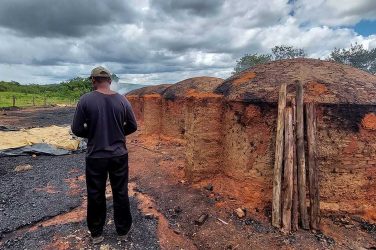When talking about the Brazilian aeronautics industry, the first name that comes to mind is Embraer, the factory from the city of São José dos Campos, in the interior of São Paulo state, in southeastern Brazil, an international reference for aircraft production. What few people know is that in the city of Porto Alegre, in the capital of the southern state of Rio Grande do Sul, a small company produces and exports aircraft to 15 countries.
Aeromot, born from the ambition of two businessmen from Rio Grande do Sul, started producing motor gliders in 1986 and has already sold over one hundred of its aircraft on the foreign market. The aeroplanes are called Ximango and Super Ximango and are used for pilot training and leisure.
The main characteristics of the motor gliders are the long wings and their light weight. The aircraft takes off using its own engine, but when it gains altitude, it flies on the wind.
In the second half of this year, Aeromot will export a new aircraft, Guri, a single engine aircraft for training, for the first time. The first unit leaving the country is going to China.
Up to now, only two aircraft of this brand are operating in Brazil, one commissioned to the Rio Grande do Sul Aero club and another to the Military Brigade, the Military Police in the state.
Aeromot has already, however, closed a contract for the sale of 20 Guris to the Civil Aviation Department (DAC). Delivery should take place over five years, but should start this year.
If it follows in the path of the Ximango, the Guri should be approved by the international market. Of the 162 motor gliders produced by Aeromot to date, 51 were purchased in the United States, 14 by the country Air Force. The Super Ximango is used for cadet training.
So as to supply to the United States, in 2002 the company had to participate in an international tender, competing with producers from Germany and Canada. The last aeroplane was delivered in 2003.
Flying far
Together with the United States, other countries that are good Aeromot aircraft consumers are the United Kingdom, France, Germany, Belgium, Australia, Japan, Argentina, Colombia, and the Dominican Republic. Of the nine aircraft to be produced in the second half of this year, at least six will be exported. The buyers are Mexico, the USA, and China.
In the first half of this year, nine aircraft were also produced. All were exported, eight to the United States and one to England. According to the Aeromot president, aeronautical engineer Cláudio Barreto Viana, the main use for motor gliders in the country is leisure. “They are normally purchased by former pilots,” he said. Both the Super Ximango and the Guri have two seats.
In the Middle East, Aeromot has only sold five aircraft, about seven years ago, to Iran. They are used for civil and military pilot training. Viana stated, however, that he is after an opportunity to export to the Arab countries, especially to Saudi Arabia.
Aeromot is currently producing 18 units a year. For next year, there are plans to increase production to 24 units.
Two engineers
Engineer Viana is one of the Aeromot founders. The factory was opened in 1967 and initially only worked on aircraft maintenance. In 1969, Viana and his partner, mechanical and electrical engineer João Claudio Jotz, also started producing aircraft seats. Today, aircraft production is the most important division in the company, still in the hands of the two partners.
The Super Ximango and the Guri are sold for between US$ 140,000 and US$ 150,000, when completely equipped. The Ximango is no longer produced. The Super Ximango can have between 100 and 115 horsepower.
Some pilots have already flown up to nine thousand metres altitude in company motor gliders, stated Viana. The average altitude, however, is between two and three thousand metres. The engine used in the Super Ximango is an Austrian Rotax.
The Guri, which can fly up to 5,000 meters in altitude, has a 115 horsepower Lycoming engine, produced in the United States. The Guri is used for a little more advanced training than the Ximango.
Contact
Aeromot
Tel: +55 (51) 3371-1644
aeronaves@aeromot.com.br
www.aeromot.com.br
Material distributed by ANBA ”“ Brazil-Arab News Agency











